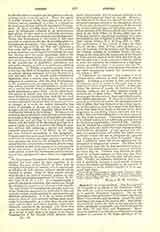

Custos (I), an under-sacristan. (See Sacristan.) (2) A superior or an official in the Franciscan Order. The word has various acceptations in ancient as well as in modern Franciscan legislation. Nor do the three great existing branches of the order—the Friars Minor, Conventuals, and Capuchins—attach the same meaning to the term at the present day. Saint Francis sometimes applies the word to any superior in the order—guardians, provincials, and even to the general (see Rule, IV and VIII, and Testament). Sometimes he restricts it to officials presiding over a certain number of convents in the larger provinces of the order with restricted powers and subject to their respective provincials. It is in this latter sense that he refers (Rule, VIII) to the custodes as having power, conjointly with the provincials, to elect and to depose the minister general.
The convents over which a custos (in this latter sense) presided were collectively called a custodia. The number of custodiae in a province varied according to its extent. Already at an early period it was deemed expedient that only one of the several custodes of a province should proceed to the general chap-ter with his respective provincial for the election of the minister general, although the rule accorded the right of vote to each custos. This custom was sanctioned by Gregory IX in 1230 (“Quo elongati”, Bull. Rom., III, 450, Turin edition) and by other popes, evidently with the view to prevent unnecessary expense. The custos thus chosen was called Custos custodum, or, among the Observantines until the time of Leo X (“Ite et vos”, Bull. Rom., V, 694), discretus discretorum. This ancient legislation, which has long since ceased in the Order of Friars Minor, still obtains in the Order of Friars Minor Conventuals, as may be seen from their constitutions confirmed by Urban VIII (see below). The present-day legislation on the point among the Capuchins and Friars Minor may be briefly summed up as follows: In the Capuchin Order there are two kinds of custodes—custodes general and custodes provincial. Two custodes general are elected every three years at the provincial chapters. The first of these has a right to vote at the election of the minister general should a general chapter be held during his term of office. Besides, he has the obligation of presenting to the general chapter an official report on the state of his province. The provincial custodes, on the contrary, have no voice in the general chapters, and their rights and duties are much restricted and unimportant. In the constitutions of the Order of Friars Minor there is also mention of two kinds of custodes—one called custos provincice, the other custos regiminis. The former is elected at the provincial chapter and holds office for three years. Besides having a voice in all capitular acts of his province he takes part in the general chap-ter, should his provincial be impeded. The custos regiminis is a prelate who rules over a custody, or small province. He possesses ordinary jurisdiction and has all the rights and privileges of a provincial. The number of convents in a custodia regiminis ranges from four to eight.
GREGORY CLEARY

